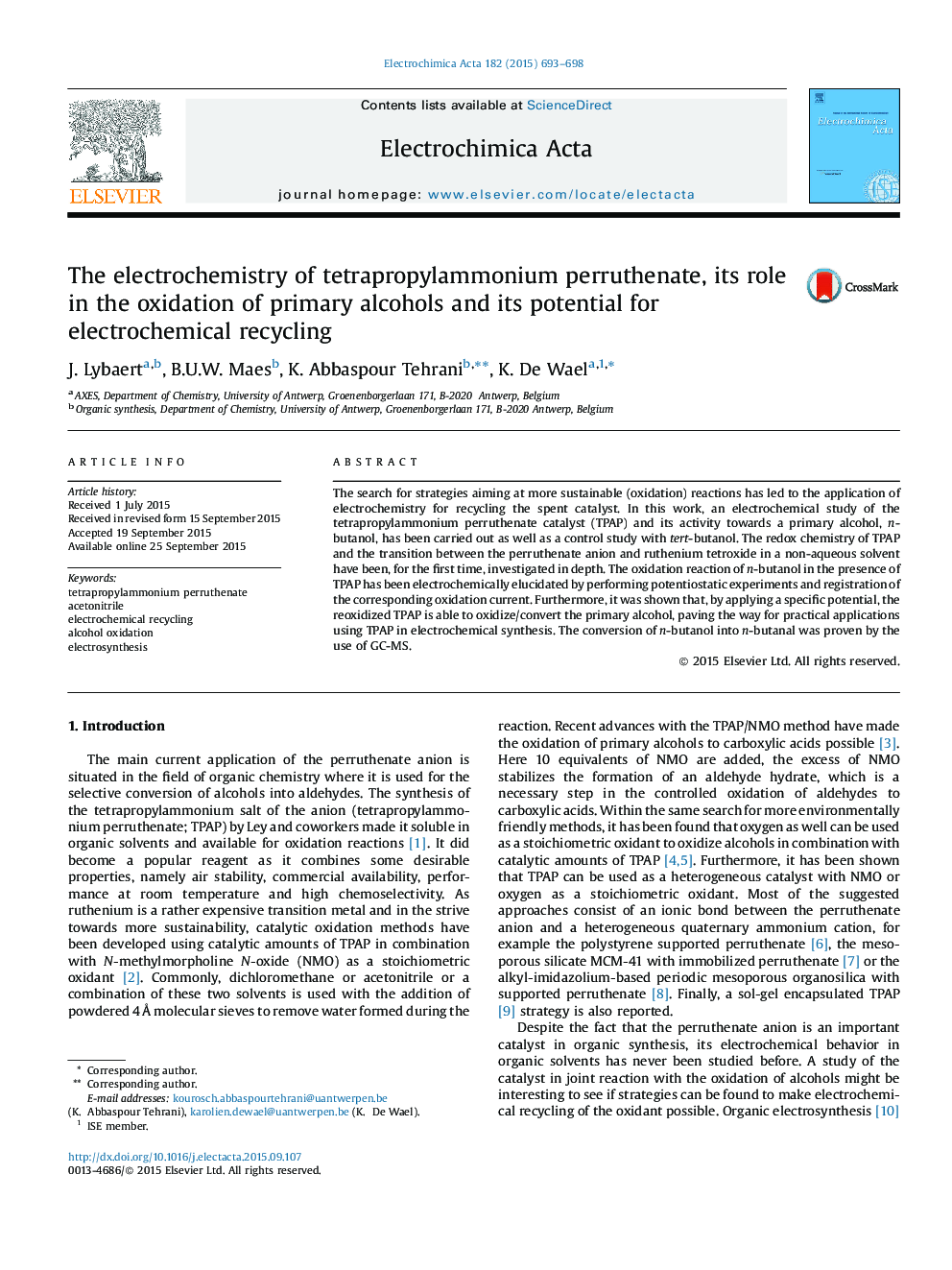| Article ID | Journal | Published Year | Pages | File Type |
|---|---|---|---|---|
| 6610100 | Electrochimica Acta | 2015 | 6 Pages |
Abstract
The search for strategies aiming at more sustainable (oxidation) reactions has led to the application of electrochemistry for recycling the spent catalyst. In this work, an electrochemical study of the tetrapropylammonium perruthenate catalyst (TPAP) and its activity towards a primary alcohol, n-butanol, has been carried out as well as a control study with tert-butanol. The redox chemistry of TPAP and the transition between the perruthenate anion and ruthenium tetroxide in a non-aqueous solvent have been, for the first time, investigated in depth. The oxidation reaction of n-butanol in the presence of TPAP has been electrochemically elucidated by performing potentiostatic experiments and registration of the corresponding oxidation current. Furthermore, it was shown that, by applying a specific potential, the reoxidized TPAP is able to oxidize/convert the primary alcohol, paving the way for practical applications using TPAP in electrochemical synthesis. The conversion of n-butanol into n-butanal was proven by the use of GC-MS.
Related Topics
Physical Sciences and Engineering
Chemical Engineering
Chemical Engineering (General)
Authors
J. Lybaert, B.U.W. Maes, K. Abbaspour Tehrani, K. De Wael,
